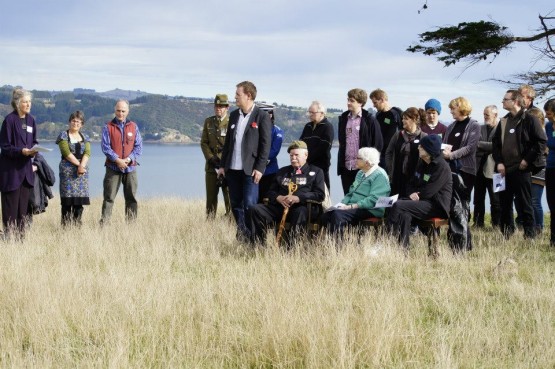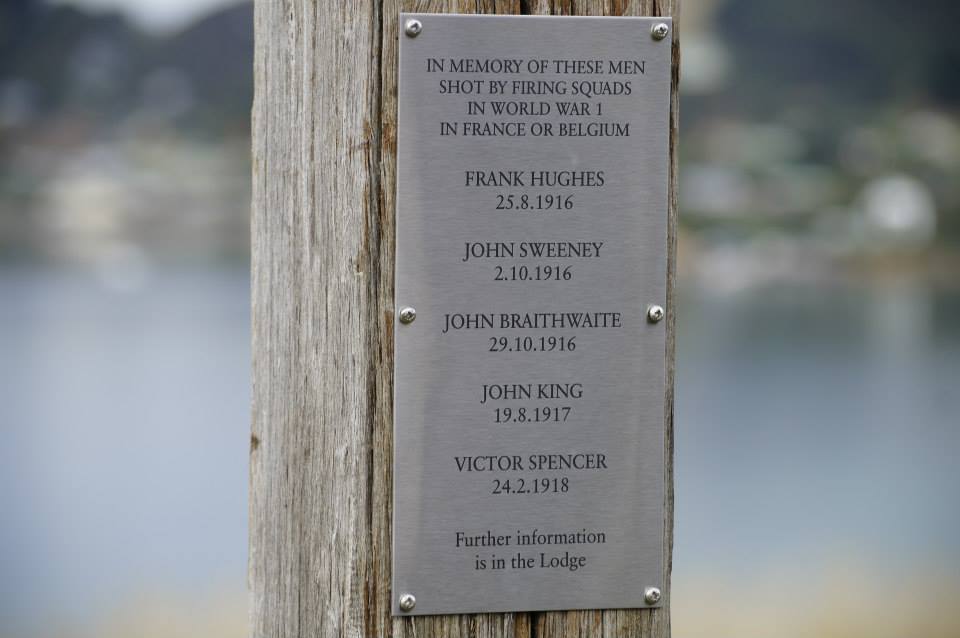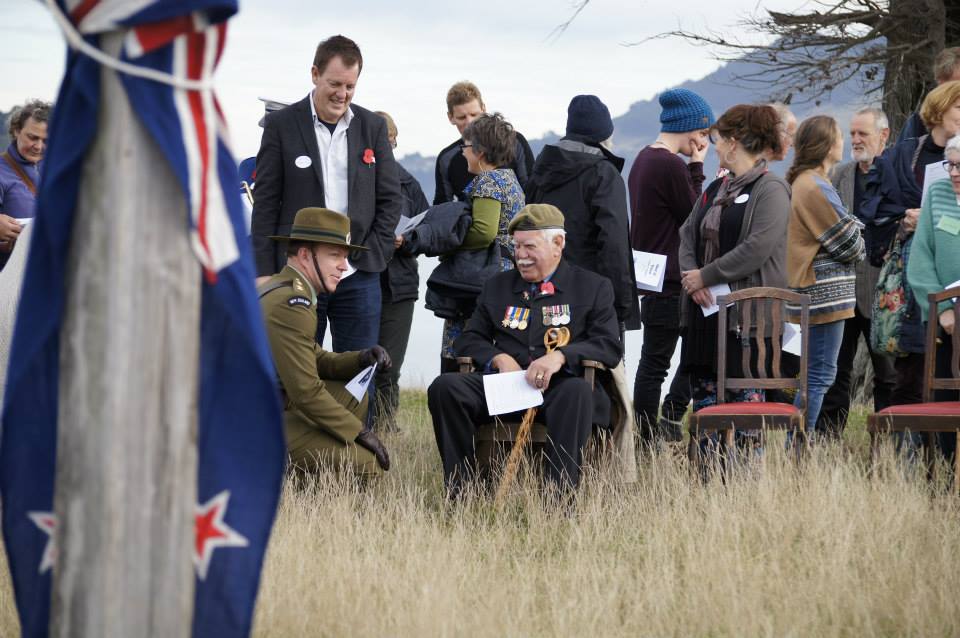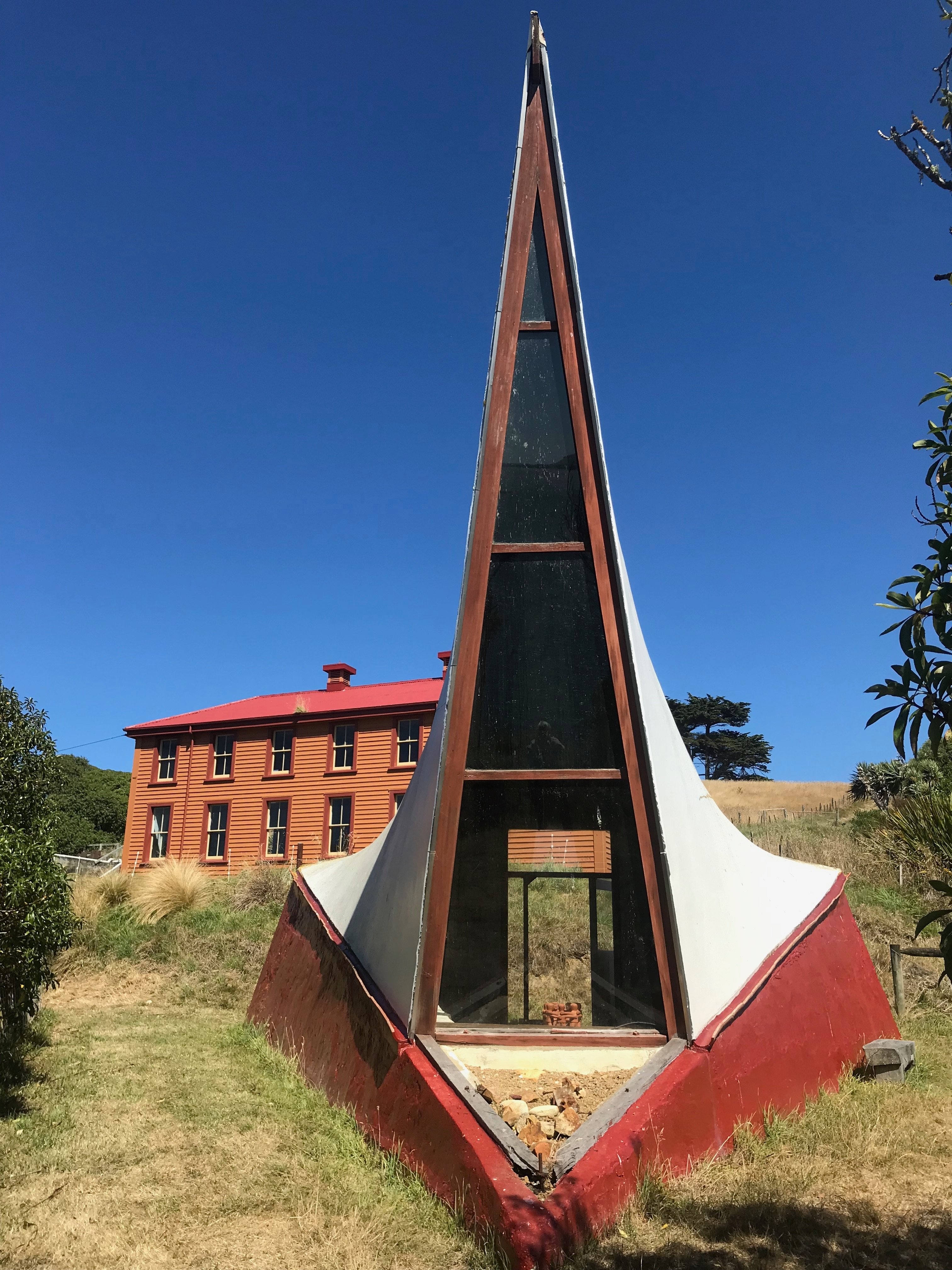
Commemorates five New Zealand soldiers executed following court-martial in WW1
Press release from the Quarantine Island Kamau Taurua Community (Incorporated) 13/04/2015
Preparations are underway for a simple dedication ceremony on Quarantine Island to be held the day after ANZAC Day (on 26th April). The Quarantine Island Kamau Taurua Community, in support of elder Lyndall Hancock, have decided to commemorate five New Zealand soldiers executed following court-martial, two of them from Canterbury and three from Otago regiments.
The memorial, which is planned to be erected on the old WW1 parade ground on the island, will also acknowledge the burden of those soldiers who were their executioners, some of them being men from their own units. In WW1, 28 NZ soldiers in Northern France and Southern Belgium were court-martialled and sentenced to death; almost all for desertion in various forms.
Some of them were frequently in trouble, some were suffering from “shell shock”, some were not fully recovered from injuries and some were victims of indifference or malice by their superior officers. Few were fairly represented at their courts-martial.
Of these 28 men, five were shot: Frank Hughes, John Sweeney, Jack Braithwaite, John King and Victor Spencer. “The actions of the soldiers who were shot might now be viewed very differently”, said Lyndall Hancock. “At the time, harsh military discipline was seen as necessary and the death penalty was part of that process. Our modern understanding of post-traumatic stress disorder has led to a new perception of their actions, which at the time were seen as deeply shameful and traitorous.
Our Community wanted to remember these men and to our knowledge, this will be the first such memorial to them in New Zealand. To us, this reflects our Community ideals of peace, social justice and restoration.” She added that the project which had developed through her work with the Island’s former keeper, Gordon Douglas, was independent of official commemorations.
In 2000, a Pardon for Soldiers of the Great War was enacted in Parliament, which formally pardoned these men. The Quarantine Island Kamau Taurua Community was formerly known as the St Martin Island Community and for more than 50 years has been involved in the voluntary care and restoration of this historic island, which is a Department of Conservation recreational reserve.
Aside from re-vegetation and restoration of historic buildings from the quarantine days of Otago’s settlers, the community also hosts many school groups and others who appreciate the tranquillity and simplicity of the island. Part of their concern has also been with issues of social justice, and over the years, a quiet influence has been felt in the opportunity for people to learn and express ideas on topics such as domestic violence, poverty and inequality.
The Community has always seen itself as a beacon of hope and of peace. In recent years, alternative commemorations of Anzac Day have taken place, where the emphasis has been on voicing the often unheard stories of those who served – the women at home, personal connections to soldiers who returned as very different men, and the stories of those who chose not to fight because of their pacifist beliefs.
The Island Community has had a strong connection to the global peace movement and at one stage in the 1980s hosted German conscientious objectors who elected to do voluntary service on the island.
Quarantine Island Kamau Taurua Community (Incorporated)
The five soldiers executed
Frank Hughes Age 28 Canterbury Regt 25 Aug 1916 Desertion
John Sweeney Age 37 Otago Regt 2 Oct 1916 Desertion
John Braithwaite Age 31 Otago Regt 29 Oct 1916 Mutiny
John King Age 32 Canterbury Regt 19 Aug 1917 Desertion
Victor Spencer Age 23 Otago Regt 24 Feb 1918 Desertion

(Dedication ceremony April 26th 2015, photo Francine Vella)


” ANZAC Peter Matheson
ANZAC DAY
Five young men, Frank Hughes, John Sweeney, John Braithwaite, Victor Spencer, John King. Volunteers for King and Country.
An engineer, miner, builder’s labourer, a journalist. Told the night before they were to be shot at dawn.
We think of them today. Of their families. Of the unnamed mates who had to raise their rifles and shoot them in cold blood. Of the medical officers who certified their deaths. Of chaplains, like Parata, who sat up with them through the night. Of fellow prisoners in the detention camp in France who were marched out to watch the executions, stage-managed as a grim deterrent to them and others.
Today we are here to remember them. “Don’t bandage my eyes. I want to see them shoot”, said Frank Hughes. John Braithwaite couldn’t believe he was being accused of starting a mutiny, when his aim had been to defuse tension. We ask: why were these young men shot for being terrified? What does that tell us about this war?
This autumn in particular we focus on Gallipoli. Many of us wonder at the courage of individual soldiers. Many wonder at the absolute folly of the Gallipoli campaign, indeed of the whole War. Apart from toppling the German Kaiser and ushering in the Russian Revolution it achieved nothing at all. Did it? What did it do for New Zealand? These young men were caught in the middle. Their name became like the mud of the Somme. There are no memorials to them.
Until now.
We remember the top brass, the Russells and the Haigs. Their determination to maintain discipline meant that individual soldiers, often with proven records of bravery, became means to ends. Although stunned, concussed, their nerves shot to pieces by the inhuman bombardment on the Somme, or elsewhere, they were branded as cowards, deserters. What sort of army had to rely on this systematic terror?
There was a structure of military justice. These men were not strung up by kangaroo courts. They were given a defence counsel. The decision of the court martial was referred to company commander and up the line to Haig himself. Many death sentences were in fact commuted. We are not here to point accusing fingers at anyone.
It is the machine-line inhumanity of the whole process which these executions highlight. Private Sheehan, himself undergoing Field Punishment, was outraged by it. He refused to fill sandbags to form a wall for the execution of John King: “I will not fill sandbags to shoot a boy wearing the same uniform as myself.”
It is good that this War is not being forgotten. But why are our leaders so gung ho on celebrating it as something to be proud of ? What was so glorious about it? What can we today learn from its butchery? Local Frenchwomen laid flowers on the grave of Frank Hughes a hundred years ago. We follow their compassion today. We mourn these forgotten men.
We are not here to make heroes of them. They were broken. When ordinary guys, driven beyond endurance, their nerves gone, chain-smoke, get drunk, go AWOL, do anything rather than face the trenches again, what is that telling us? What sort of Imperial values, what sort of military discipline, what sort of political leadership rewarded terror with humiliation and the firing squad?
We hope this memorial will stir up compassion, and nudge the passer-by to ask some of these questions.
Peter Matheson. April 2015″

